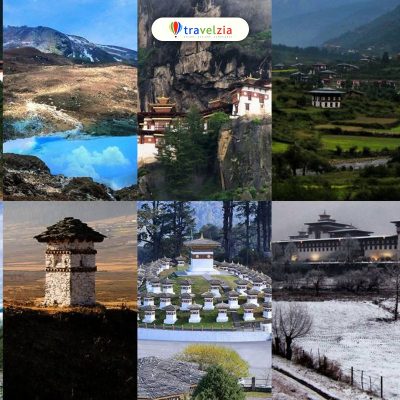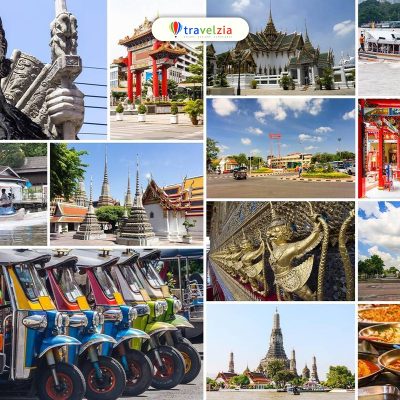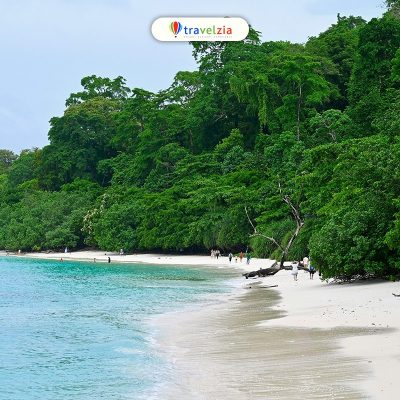It started with a longing — a longing to breathe air so crisp it stung the lungs, to walk trails where silence had a sound, and to lose myself in landscapes untouched by time. That’s how my journey to Sikkim, the mystical Himalayan state of Northeast India, began.
From winding mountain roads to sacred valleys wrapped in clouds, Sikkim is more than just a travel destination — it’s a living canvas of natural beauty, age-old culture, and untamed adventure. Whether you’re seeking spiritual solace, thrilling trekking routes, or offbeat escapades, this state unfolds its charm with every bend and turn. If you’ve been searching for the best places to visit in Sikkim for nature lovers and adventure seekers, this curated guide will take you through some breathtaking stops — from high mountain passes and glacial lakes to hidden villages and spiritual hilltops. Ready for the journey?
Let’s begin where nature meets the soul, and adventure stirs the spirit.
1. Goechala Trek – The Ultimate Trekking Experience

Are you a trekker looking for the perfect challenge in Sikkim? Look no further than Goecha La, one of the most iconic trekking destinations in India. Starting from Yuksom in West Sikkim, this trail ascends to approximately 4,940 metres, offering panoramic views of Mt. Kanchenjunga, the world’s third-highest peak.
Along the journey, you pass through dense rhododendron forests, Samiti Lake, and the spectacular Dzongri viewpoint. With its diverse landscape and glimpses of rare Himalayan flora and fauna, Goechala is also a paradise for wildlife enthusiasts.
Best for: Experienced trekkers, nature photographers, adventure lovers.
2. Yumthang Valley – The Valley of Flowers

If you’re looking for a fairytale landscape, Yumthang Valley in North Sikkim is your answer. Surrounded by snow-clad peaks and covered with blooming rhododendrons (in April–May), it’s a nature tourism gem in Sikkim.
Adventure Tip: Try hot spring baths amidst snow or go further up to Zero Point, close to the Indo-China border.
3. Namchi – The Land of Pilgrimage

Namchi, the spiritual heart of South Sikkim, sits at around 1,675 metres above sea level and is known for its divine energy. A must-visit is Char Dham, a hilltop complex featuring replicas of four sacred Hindu shrines—Kedarnath, Badrinath, Puri, and Rameswaram.
Nearby, Samdruptse Hill houses a 135-foot tall statue of Guru Padmasambhava, believed to be the protector deity of Sikkim. Namchi offers a calm retreat infused with culture and devotion.
Best for: Spiritual seekers, family travellers, cultural tourism.
4. Gangtok – The Enchanting Capital

Gangtok, perched at 5,410 feet, is where your Sikkim adventure often begins. The vibrant city blends modern comforts with spiritual calm. Wander through MG Marg, feast on local momos, and explore the serene Enchey Monastery.
Catch a sunrise from Tashi View Point for spectacular views of Kanchenjunga. For culture lovers, the Namgyal Institute of Tibetology is a deep dive into Sikkimese and Tibetan heritage. Adventure seekers can try paragliding from Saramsa or river rafting in the nearby Teesta River.
Best for: First-time travellers, cultural explorers, adventure beginners.
5. Lachung & Lachen – The Hidden Gems of the North

Lachung and Lachen, two alpine villages in North Sikkim, are serene escapes far from the urban chaos. In Lachung, visit the enchanting Yumthang Valley—famously known as the Valley of Flowers—where the landscape explodes with rhododendrons during spring. A little beyond lies Yumesamdong (Zero Point), covered in snow almost year-round. Lachen, on the other hand, is the base for the journey to Gurudongmar Lake, one of the highest lakes in the world at 17,800 feet.
Due to the altitude, proper acclimatisation is crucial before trekking to the lake.
Best for: Snow lovers, offbeat travellers, scenic photography.
6. Tsomgo Lake – The Frozen Beauty at 12,313 ft

A few hours’ drive from Gangtok, nestled at a height of 12,313 ft, lies Tsomgo Lake (also called Changu Lake). As you ascend the winding roads, you’ll spot the pristine glacial lake emerging like a sapphire mirror amidst the stark mountain slopes.
Surrounded by snow for most of the year, Tsomgo Lake is a mystical sight — its still waters changing hues with the sky above. During summer and monsoon, it is fringed with wildflowers, and in winter, it transforms into a solid sheet of ice. Yaks adorned with vibrant woollen gear offer rides around the lake — a favorite among families.
Best for: Scenic travellers, snow lovers, honeymooners
7. Zuluk – The Hidden Spiral Road Escape

If adventure for you lies in discovering the unknown, then Zuluk is your kind of place. Situated at around 10,000 feet on the Old Silk Route, Zuluk is known for its iconic zigzag loops — over 30 sharp hairpin bends that look like a ribbon from above. This lesser-explored hamlet in East Sikkim is surrounded by thick forests, making it ideal for spotting Himalayan wildlife. In summer and monsoon (especially July), the slopes come alive with wild orchids and colorful rhododendrons. Watch the sunrise from Thambi View Point, and if you’re lucky, you might get a glimpse of the mighty Kanchenjunga rising from the clouds.
Best for: Offbeat travellers, bikers, monsoon explorers.
8. Ravangla – Serenity with a Dash of Adventure

Perched at 7,000 ft, Ravangla lies between Gangtok and Pelling, and it is famous for its peaceful monasteries and panoramic views of the snow-clad Himalayas.
At the heart of Ravangla is the Buddha Park, where a towering 130-ft statue of Lord Buddha sits in quiet majesty. But beyond its spiritual allure, Ravangla offers nature trails like the Maenam Wildlife Sanctuary trek and birdwatching spots for adventure seekers. Ravangla in July is shrouded in mist and filled with the sound of cicadas, making it a tranquil escape with a raw monsoon charm.
Best for: Spiritual travellers, wildlife lovers, light adventurers.
9. Pelling – Where Nature and Culture Blend

Imagine waking up to a postcard-perfect view of the Kanchenjunga range. That’s Pelling for you — a peaceful town in West Sikkim that’s rising fast on the eco-tourism map. Located at around 7,200 ft, Pelling offers a blend of natural beauty, ancient monasteries, and short treks.
Don’t miss the Skywalk and Chenrezig Statue, the Pemayangtse Monastery, and Rabdentse Ruins, the second capital of the former Kingdom of Sikkim.Pelling is also a great base for soft treks, waterfalls, and visits to alpine lakes, making it a complete destination for both culture enthusiasts and adventure seekers.
Best for: Family holidays, photographers, cultural explorers.
10. Nathula Pass – Sikkim’s Snowy Frontier

At 14,140 ft, Nathula Pass is one of the highest motorable roads in the world and a highlight of adventure travel in Sikkim. Once part of the historic Silk Route, it now serves as a military post on the Indo-China border, just 56 km from Gangtok.
The dramatic journey to Nathula is as memorable as the destination itself — winding roads, ever-changing weather, and surreal landscapes. Near the pass is Sherathang, a bustling Indo-Tibetan trade market, and Kupup, a fog-kissed village engulfed by clouds.
Nathula is especially magical in July, when clouds hover over the snow patches, creating a dreamlike landscape. But don’t forget: Indian nationals need a special permit to visit.
Best for: Adventure lovers, snow seekers, border explorers
Best Timings: Open Wednesday to Saturday
Entry Fee: ₹200 per person (permit required)
11. Gurudongmar Lake – Sacred Waters at the Edge of the Sky

If there’s a place where heaven touches earth, Gurudongmar Lake might just be it. One of the highest lakes in the world, it sits at a breathtaking 17,800 ft near the Tibetan border in North Sikkim.
The lake remains frozen in winter, but in July, the snow melts to reveal an ethereal turquoise mirror reflecting the surrounding white-capped peaks. Revered by Hindus, Sikhs, and Buddhists alike, Gurudongmar is not just a destination — it’s a pilgrimage into nature’s soul. Though the route is tough, especially due to high altitude, it rewards travellers with unparalleled views and spiritual peace.
Best for: High-altitude trekkers, spiritual adventurers, nature lovers
Timings: Open 24 hrs
Entry Fee: Free (Restricted Area Permit required)
12. Zero Point – Where the Road Ends & Snow Begins

Located at a dizzying 15,300 ft, Zero Point (Yumesamdong) is where civilisation ends and the raw beauty of North Sikkim begins. Surrounded by snow-clad peaks and rugged terrain, it lies close to the Indo-China border and offers an unforgettable high-altitude experience.
The journey from Yumthang Valley to Zero Point is dramatic — with frozen streams, grazing yaks, and panoramic Himalayan views. Even in July, snow often blankets the ground, making it a must-visit for snow lovers. Due to the extreme altitude, proper acclimatization in Lachung is essential before visiting. Permits are required, but the surreal silence and untouched beauty make it worth every step.
Best for: Snow seekers, thrill chasers, mountain photographers.
Quick Tips for Sikkim Nature & Adventure Travel
- Best time to visit Sikkim: March to June (spring/summer) and October to December (autumn/early winter)
- Permits: Required for Nathula Pass, Gurudongmar Lake, and North Sikkim.
- Fitness: Essential for high-altitude treks like Goechala and Gurudongmar.
- Weather: Varies by region – pack layers and waterproof gear.
In Conclusion
Whether you’re conquering the Goechala trek, meditating at Namchi, or chasing snowfall at Nathula Pass, Sikkim opens a doorway to soul-stirring landscapes and heart-pounding adventures. These top places to visit in Sikkim for nature and adventure seekers are not just destinations—they’re chapters in a story you’ll never forget.
So lace up your boots, breathe in the alpine air, and let Sikkim change the way you travel.
1. What is the best time to visit Sikkim for nature and adventure activities?
The best time to visit Sikkim is from March to June and September to early December. However, July offers a unique charm with lush green valleys and fewer crowds — perfect for offbeat travellers. For snow experiences, December to February is ideal.
2. Can I visit Sikkim in July during the monsoon?
Basically, it depends on the weather. While July brings some rain, it also unveils the lushest green landscapes, blooming alpine flowers, and fewer tourists. However, do check weather and road conditions, especially if you’re heading to North Sikkim or Zuluk.
3.How many days are ideal to explore Sikkim fully?
A well-paced trip to Sikkim should be 7–10 days, allowing you to explore Gangtok, North Sikkim (Lachen, Lachung, Gurudongmar, Yumthang), Pelling, Ravangla, and more. Add a few buffer days if you plan to trek.
4. Is Sikkim safe for solo travelers and trekkers?
Absolutely. Sikkim is one of the safest and cleanest Himalayan destinations. Locals are friendly, and solo or group trekking is common. However, it’s important to acclimatize properly in high-altitude zones and consult guides for difficult treks like Goecha La.
5. Is there snow in Sikkim in July?
While peak snowfall in Sikkim occurs from late October to March, some high-altitude regions like Gurudongmar Lake, Zero Point (Yumesamdong), and parts of Nathula Pass may still have patches of snow even in July, depending on weather conditions. These places remain chilly year-round due to their elevation, offering a touch of snow even during the summer monsoon season.
6. What are the major railway stations and airports near Sikkim?
Sikkim doesn’t have a major railway station yet. The nearest railheads are:
- New Jalpaiguri (NJP), Siliguri – about 120 km from Gangtok.
- Siliguri Junction – another nearby station connecting major cities.
For air travel:
- Pakyong Airport (PYG), near Gangtok, is Sikkim’s only airport with limited domestic flights.
- Bagdogra Airport (IXB), in West Bengal, is the nearest major airport (about 125 km from Gangtok) and well-connected to Delhi, Kolkata, Guwahati, and other Indian metros.
From these points, you can continue your journey to various parts of Sikkim by road.








